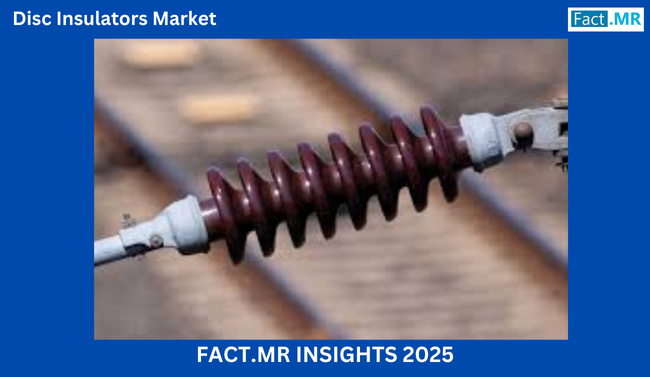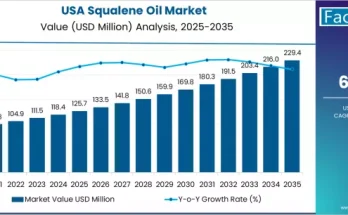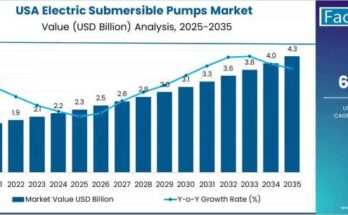As global energy demands rise and power transmission systems expand, the disc insulators market is becoming increasingly essential to the infrastructure of high-voltage power lines. Disc insulators, also known as suspension insulators, play a critical role in maintaining the safety, stability, and efficiency of overhead power transmission by insulating conductors from transmission towers.
As utilities and governments continue to invest in grid modernization and renewable integration, the demand for durable and high-performance insulators is poised for sustained growth over the next decade.
Market Overview
Disc insulators are key components in high-voltage transmission and distribution networks. They are designed to prevent electrical current from flowing to the ground through transmission towers, even under extreme environmental conditions. Typically manufactured using materials like porcelain, glass, or composite polymers, disc insulators must withstand mechanical stress, electrical surges, and environmental factors such as pollution and weather extremes.
The market is driven by increasing investments in power infrastructure, urbanization, and the expansion of long-distance transmission lines. Moreover, the rise in renewable energy installations—often located in remote areas—requires reliable transmission networks that rely on efficient insulation solutions. The adoption of smart grid technologies is also contributing to the broader application of advanced insulator systems, making this market an integral part of the power sector’s evolution.
Regional Insights
North America
North America remains a significant contributor to the disc insulators market, primarily due to ongoing upgrades to aging grid infrastructure. The region is witnessing steady growth in renewable energy projects, particularly in the United States and Canada, which necessitates the installation of high-voltage transmission lines across vast terrains. These factors drive the demand for high-quality disc insulators that can withstand diverse environmental conditions.
Europe
Europe’s strong regulatory framework and emphasis on environmental sustainability have led to consistent investments in smart grid systems and renewable energy transmission. Countries in Western Europe are modernizing their power distribution infrastructure, which includes replacing older insulators with more efficient and reliable disc insulators. Additionally, growing cross-border electricity trading in the European Union is creating a need for expanded transmission networks, further boosting market prospects.
Asia-Pacific
Asia-Pacific is emerging as a dynamic region in the disc insulators market, with countries like China and India leading the charge in electrification and rural grid expansion. Large-scale infrastructure projects, combined with ambitious renewable energy targets, are creating substantial demand for high-voltage transmission systems. As a result, the need for efficient and cost-effective insulators is rapidly growing, supported by a robust domestic manufacturing base in several countries.
Middle East & Africa
The Middle East and Africa are gradually strengthening their power transmission capabilities to support industrial development and rural electrification. Investments in utility-scale energy projects and the expansion of national grid networks are contributing to the demand for durable disc insulators that can operate effectively in harsh climates.
Latin America
Latin America is experiencing moderate but steady growth in its power sector. As countries work toward improving electrification rates and reducing power losses, disc insulators are becoming a critical part of transmission and distribution strategies, particularly in regions with challenging geographical and environmental conditions.
Key Trends & Forecast
Rise in Renewable Energy Projects
The increasing deployment of solar and wind power plants in remote and rural areas has heightened the need for long-distance, high-voltage power transmission. This shift is expected to boost the adoption of disc insulators, which are ideal for supporting the physical and electrical requirements of modern transmission lines.
Shift Toward Composite Insulators
While traditional materials like porcelain and glass have long dominated the market, composite insulators made of polymeric materials are gaining traction. These offer advantages such as lighter weight, improved contamination resistance, and better mechanical strength, making them suitable for regions with extreme weather or pollution.
Emphasis on Grid Reliability
As utilities prioritize uninterrupted power supply and grid stability, the reliability of critical components like disc insulators becomes paramount. The market is witnessing increased demand for insulators that offer superior mechanical strength and long-term durability under both electrical and environmental stress.
Technological Advancements
Manufacturers are investing in advanced manufacturing processes and quality control techniques to enhance the performance and longevity of disc insulators. Innovations include coatings that resist pollution-induced flashovers and designs that optimize mechanical load distribution.
Regulatory and Safety Standards
Compliance with international and regional safety standards is playing a key role in shaping product development and procurement practices. Utilities are increasingly adopting insulators that meet rigorous performance specifications to ensure long-term system reliability and safety.
Applications & End-Use Outlook
Disc insulators are primarily used in high-voltage transmission lines but have applications across a variety of electrical infrastructure setups:
Power Transmission
Disc insulators are essential for long-distance transmission lines that carry electricity from generation plants to substations. Their ability to withstand high mechanical and electrical stresses makes them indispensable in this sector.
Distribution Networks
Although traditionally more common in transmission applications, disc insulators are increasingly being used in medium-voltage distribution systems, particularly in regions where environmental pollution and weather extremes pose operational challenges.
Railways and Electrified Transport
With the electrification of railways gaining momentum in many regions, disc insulators are being used in overhead contact systems to ensure safe and efficient operation. Their robust construction makes them ideal for supporting power supply systems in transport networks.
Industrial Power Infrastructure
Industries with in-house power generation and transmission capabilities, such as mining, manufacturing, and oil & gas, also rely on disc insulators to maintain electrical safety and system integrity.
Competitive Landscape
The disc insulators market features a mix of global and regional players focused on delivering reliable and innovative solutions. Leading manufacturers are expanding their product portfolios to include hybrid insulators and are investing in research and development to enhance material performance and design efficiency. Strategic partnerships, mergers, and capacity expansions are commonly observed strategies aimed at consolidating market presence and meeting rising global demand.
Moreover, manufacturers are focusing on sustainability by improving manufacturing practices, reducing waste, and using recyclable materials, aligning with broader environmental goals.
Challenges and Opportunities
Challenges
Environmental Stress: Polluted and coastal environments pose risks of flashover and insulation failure, necessitating continuous innovation in design and materials.
High Initial Costs: Advanced composite insulators may come at a higher upfront cost compared to traditional materials, which can deter price-sensitive markets.
Standardization Issues: Varying regional specifications can complicate product design and limit interoperability across different power systems.
Opportunities
Expansion of Renewable Grids: The growth in decentralized energy systems and hybrid grid models creates new application opportunities for disc insulators.
Smart Grid Integration: Emerging applications in smart grid frameworks present potential for insulators with embedded condition monitoring features.
Export Potential: Regions with underdeveloped power infrastructure present untapped markets for high-quality, cost-effective insulator solutions.
Conclusion
The disc insulators market is poised to play a pivotal role in shaping the future of power transmission and distribution across the globe. As the industry navigates the challenges of renewable energy integration, grid modernization, and environmental sustainability, the demand for robust, reliable, and innovative insulator solutions is set to grow steadily.
Manufacturers and utility providers must continue to invest in advanced materials, smart design, and compliance with international standards to ensure safety and reliability. Accessing comprehensive market insights can guide stakeholders in making strategic decisions that support the evolving energy landscape.



